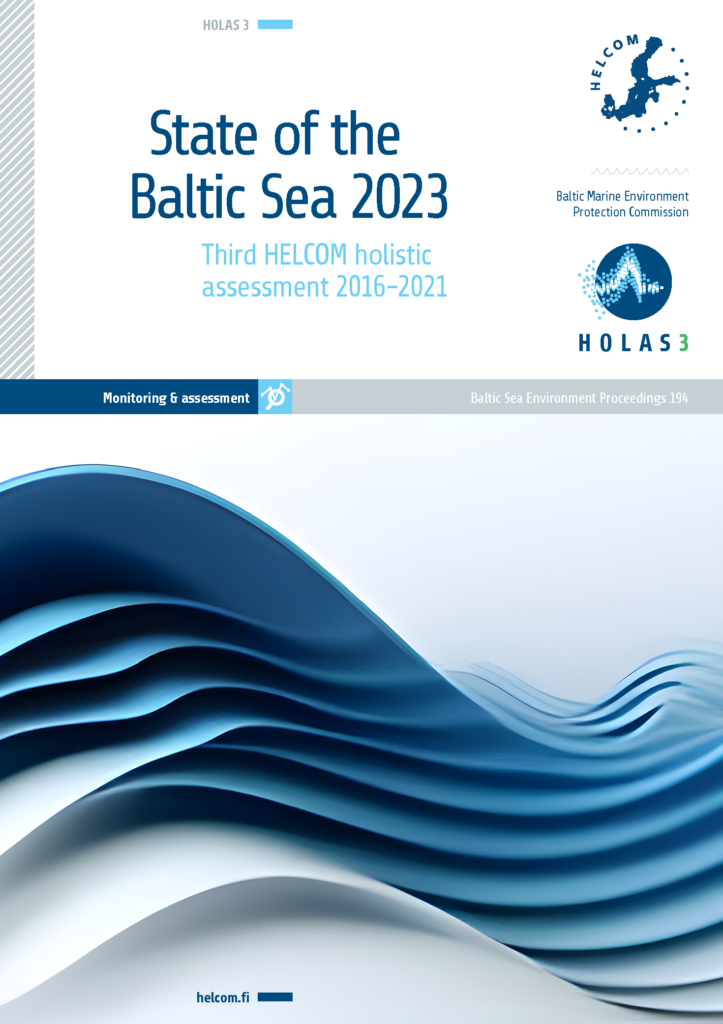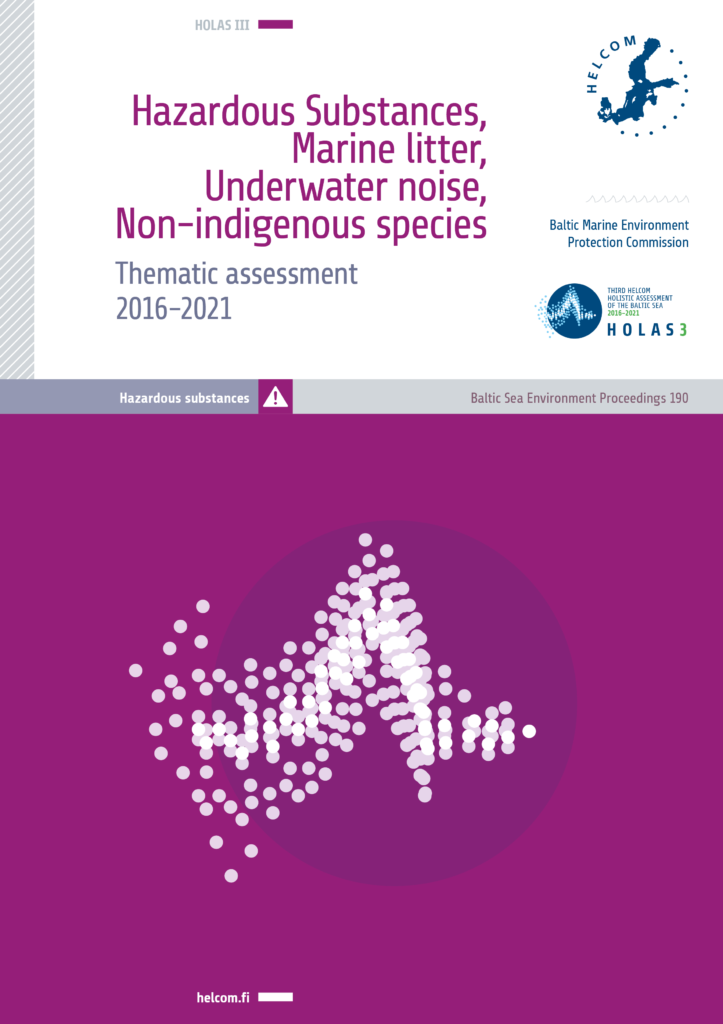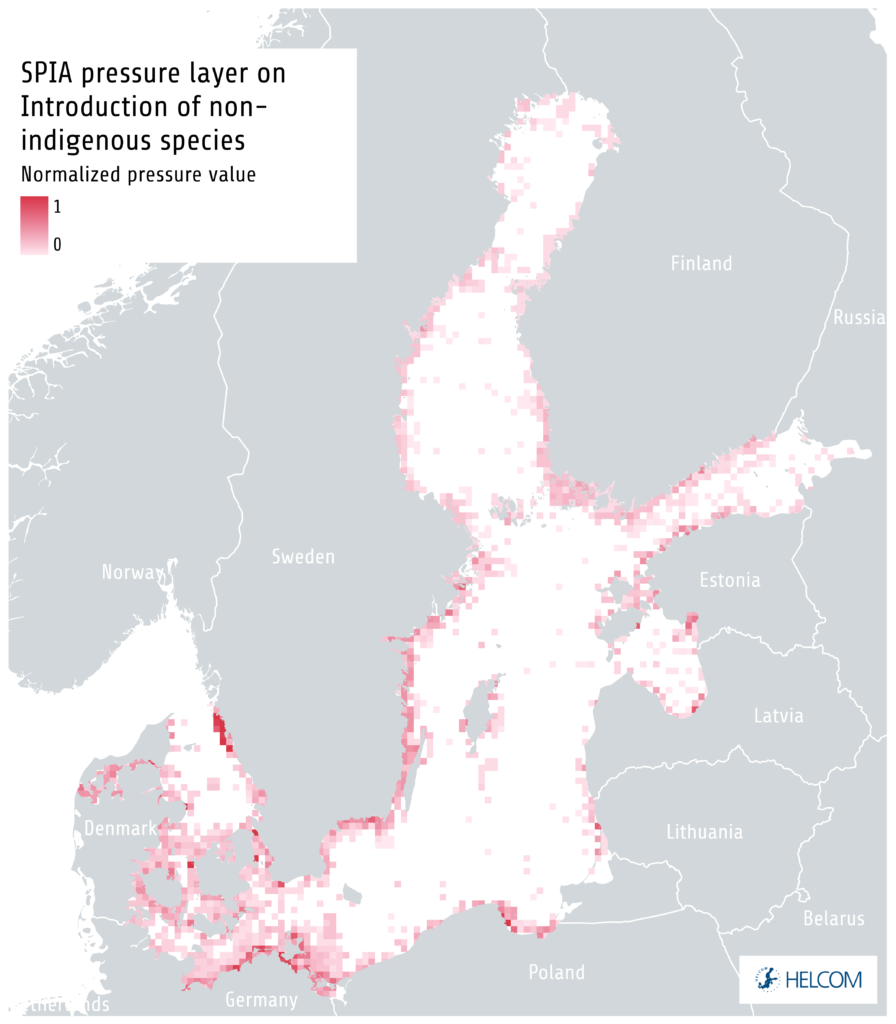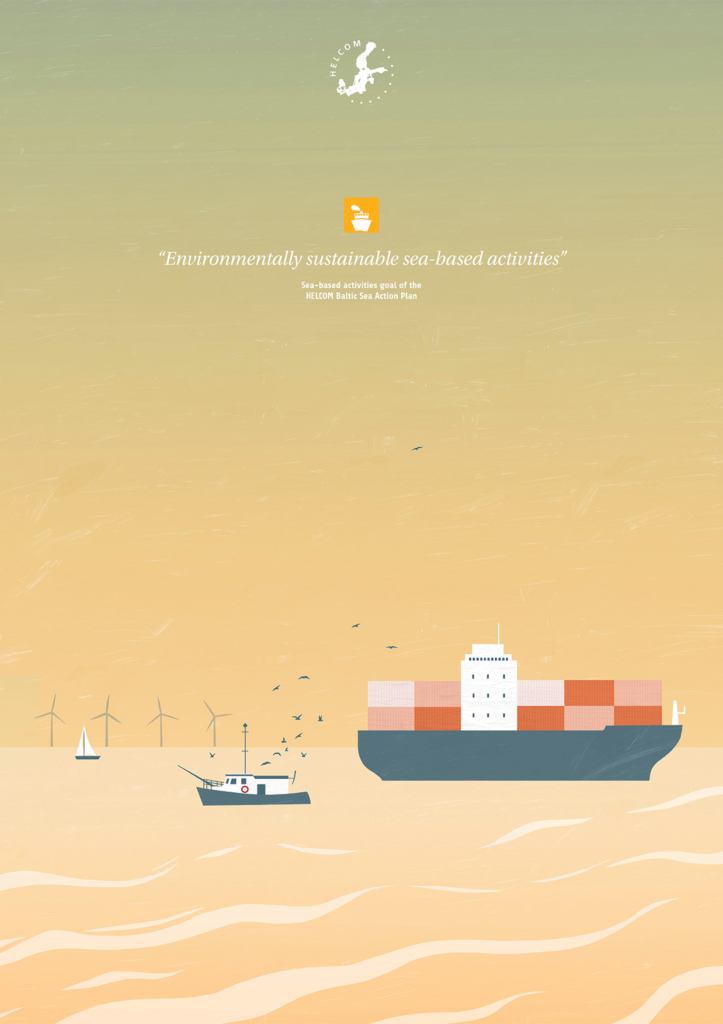NON-INDIGENOUS SPECIES
Non-indigenous species
Thirteen non-indigenous or cryptogenic species appeared for the first time in the Baltic Sea during the assessment period 2016-2021 (Figure 4.15). The threshold value for good environmental status is no new introductions of non-indigenous species through human activities at the scale of the whole Baltic Sea during the assessment period. Good status for non-indigenous species was therefore not achieved.
The new introductions were recorded in the Kattegat, the Great Belt, Kiel Bay, the Bay of Mecklenburg, the Bornholm Basin, the Gulf of Gdansk, the Archipelago Sea and the Gulf of Finland.
The indicator only considers new human-mediated introductions. Spreading within the Baltic Sea by natural means, such as by migration or aided by water currents, is not part of this indicator.
The trend in the arrival of new non-indigenous or cryptogenic species increased sharply in the second half of the last century and has not shown any signs of decreasing since then.
The number of new introductions was higher during the current assessment period (13) than in the previous one (12 introductions in 2011-2016). However, this comparison is complicated by the fact there were significant additional reports provided for the previous assessment period that were not directly included in the that assessment.
What are non-indigenous species?
Non-indigenous species are species that have spread or been transferred as a result of human activities, reaching environments in which they previously did not naturally occur. Non-indigenous species have the potential to cause harm in their new environments through their interactions with naturally occurring species or human activities.
The Baltic Sea Action Plan states the following ecological objective for non-indigenous species:
- No introductions of non-indigenous species

State of the Baltic Sea 2023 — The third HELCOM holistic assessment (HOLAS 3)
State of the Baltic Sea 2023 is a synthesis report that builds on, and integrates, results from a wide range of assessment products produced within the third HELCOM holistic assessment. Its role is to link information from the underpinning assessment products together, thus highlighting the holistic aspects. With this in mind, the summary report focuses on presenting the results and on an in-depth look at why we are seeing these results, providing over-arching context and analysis. The report helps develop a clearer picture of where we are and how things are connected, supporting coordinated and effective measures to strengthen the Baltic Sea environment.

Thematic assessment
Hazardous substances, Marine litter, Underwater noise, Non-indigenous species
The thematic assessment report on hazardous substances, marine litter, underwater noise and non-indigenous species (HELCOM 2023c), addresses each of these topics collectively regarded as pollution within the HELCOM framework.
The report provides insights into the latest developments and current state-of-the-art evaluations for pollution. It builds upon initial progress started by HOLAS II (2011-2016) and corresponding work under aligned processes (e.g. EU level and MSFD relevant developments), moving towards indicator-based assessments for all mentioned topics. Additionally, areas of ongoing development, including those lacking fully operational indicators, are incorporated to present a broader picture of key pollution-related issues.


